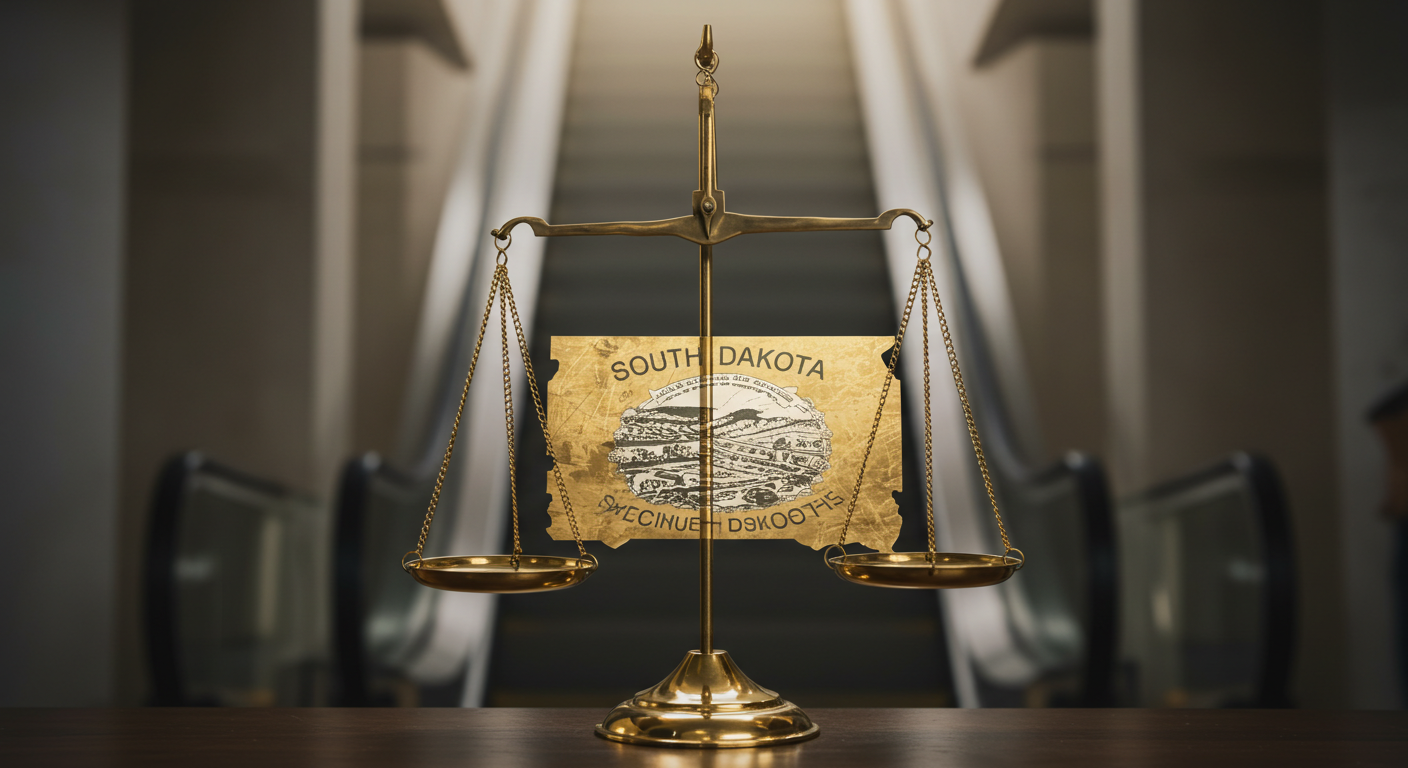Key Takeaways:
- You may be able to recover damages from an elevator or escalator accident, even if you had a pre-existing condition.
- There is a three-year statute of limitations on filing a personal injury claim in South Dakota.
- Potential defendants in elevator or escalator accident cases include property owners, building management companies, product manufacturers, and installation and inspection companies.
- Comprehensive documentation of your injury and any communication with witnesses and the defendant (such as property owners) is key to supporting your case.
- A personal injury lawyer in South Dakota can help you understand your rights and explore actions you might take against responsible parties.
Elevators and escalators injure approximately 17,000 people each year [1]. These incidents can cause permanent disabilities and disfigurements, emotional trauma, lost wages, and expensive medical bills. Families left as caretakers or survivors of people who lose their lives in an elevator or escalator accident are also victims. At Alvine Law Firm in Sioux Falls, SD, we represent both victims and survivors to deliver the justice they deserve.
In this article, we will discuss the causes and consequences of elevator and escalator injuries, as well as your rights to take legal action under South Dakota laws.
This guide is for educational purposes only and does not constitute legal counsel or advice; you can request a free consultation with one of the experienced attorneys at our law firm by clicking here or calling
Common Causes of Elevator and Escalator Injuries
While escalators and elevators are designed to enhance accessibility, they can pose serious health threats if they are not properly maintained. If a person’s clothing or a limb becomes caught in either an escalator or elevator, they could be seriously injured. Mechanical failures are also common causes of injury due to loose or broken cables, faulty connections, and broken parts.
Common causes of elevator injuries include:
- Sudden Stops/Drops: Malfunctions causing abrupt movements that injure passengers.
- Misleveling: The elevator car does not line up with the outer floor, resulting in a trip-and-fall injury.
- Door Entrapment: Doors close on passengers’ clothing or limbs, resulting in injury.
- Faulty Wiring/Electrical Problems: Electrical errors causing fires or shocks.
- Lack of Maintenance/Inspection: Failure to properly maintain and inspect the elevator.
Causes of escalator accidents include:
- Entrapment: Clothing, shoes, or body parts getting caught in the steps, sides, or comb plates of the escalators.
- Sudden Stops/Starts: Rapid, unexpected movements can cause harm.
- Missing or Broken Steps: Irregular, damaged, or missing steps can cause falls.
- Handrail Malfunctions: Handrails not moving at the same speed as the steps, or stopping altogether, can result in falls, trips, and injury.
- Overcrowding: Leading to pushing, shoving, and falls.
Additional potential causes include the owner’s failure to maintain and repair the equipment, defective design or manufacturing, improper installation, and failure to warn passengers about potential hazards.
All of these causes have unique laws in South Dakota, such as property liability laws, personal injury laws, and defective product laws. Our law firm offers representation in each type of case to help victims recover financial losses and other compensation related to their accident.
Speak with a qualified attorney about your case for free –click here to request a consultation.
Legal Theories of Liability in South Dakota
There are many potential laws that could hold someone responsible in an elevator or escalator injury. These include premises liability, negligence, and product liability.
Under premises liability, owners are responsible for ensuring that their property and any equipment on it does not harm others. They also have a duty to warn visitors and patrons of potential risks to their health, such as a faulty elevator or broken escalator.
Negligence is often used in personal injury cases to hold the defendant responsible for the plaintiff’s injuries. Under S.D. Codified Law 20-9-1, individuals are held accountable when someone is injured due to their lack of ordinary care [2].
S.D. Codified Law 20-0-10.1 highlights a defense that manufactures or designers may use in a product liability case, arguing that if their product was considered state-of-the-art at the time of construction, they may not be responsible for injuries even if there are newer and safer standards in place now [3].
If the equipment manufacturer or installer is not able to be held liable, the owner of the elevator or escalator involved in an injury may be. An attorney can help you identify the proper defendants for your case and gather strong evidence to prove their fault in your injury.
Potential Defendants in Elevator/Escalator Injury Cases
Depending on the nature of the injury, you may take legal action against the property manager or business establishment that owns the elevator or escalator; you could also potentially sue the installation company or product manufacturer.
Identifying the proper defendant depends on the cause of the injury and why it occurred. For example, a manufacturer is not liable for an injury to an elevator passenger if the owner of the equipment failed to perform proper maintenance.
Your attorney can help you appropriately identify the responsible parties in your case, including:
- Property owners
- Building management companies
- Elevator/escalator maintenance companies
- Elevator/escalator manufacturers
- Installation companies
- Inspection companies
Our team has recovered millions of dollars in personal injury lawsuits.Learn more about us and how we may be able to help you.
Gathering Evidence and Building a Case
In order to support your injury claim in court, you will need to take steps immediately after your injury and in the weeks and months following it. First and foremost, you should seek medical attention to document the extent of your injuries and any medical treatment they require.
You should also send a written report to the property owner or manager and document any in-person or telephone conversations you have with them about the injury.
Take any photos and videos of the scene and your injuries. Request contact information for any witnesses that are willing to provide it.
It is also important to preserve evidence from the scene, such as torn clothing or damaged shoes. Any evidence that supports your injury is worth keeping.
Your attorney can help you proceed with the evidence-gathering process, including requesting maintenance and inspection records to establish negligence. They can also cooperate with law enforcement on your behalf if you have filed a report or first responders came to the scene during your accident.
South Dakota-Specific Considerations
South Dakota has a three-year statute of limitations on personal injury under Codified Law 15-2-14 [4]. This law gives you 36 months to file a claim against a defendant in your case. While you do have three years to take legal action, it is always in your favor to act as soon as possible.
Important Note: You can still take action against someone for an injury even if you have a pre-existing condition. You may have to take additional steps to prove your injury was uniquely caused by the elevator or escalator incident; a reputable attorney can help build your case.
Failure to document injuries or report them as soon as you can could strengthen a defendant’s argument against your case. Whenever you are able, contact a personal injury attorney who can help.
Seeking Legal Help in South Dakota
Alvine Law Firm represents clients from all backgrounds in their pursuit of justice after a personal injury. We offer first consultations with any of our lawyers free of charge. Together, we can fight for your justice and help you recover damages — whether you are seeking compensation for medical bills, lost income, or emotional trauma and suffering.
Let’s explore your options. Contact us online or call 605-275-0808 to schedule your consultation.
Sources
[1] Riding the Escalator: How Dangerous is it Really? – PMC
[2] Codified Law 20-9-1 | South Dakota Legislature

